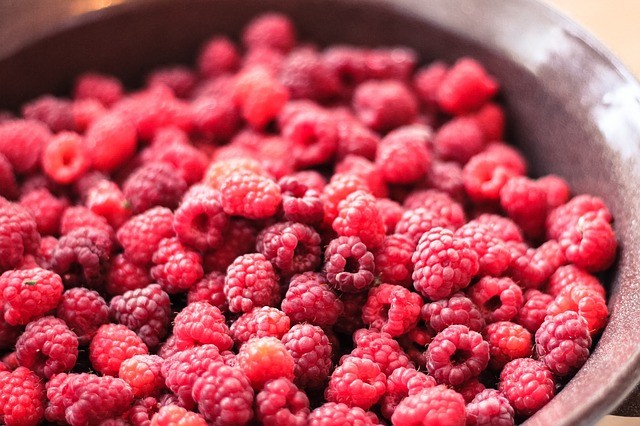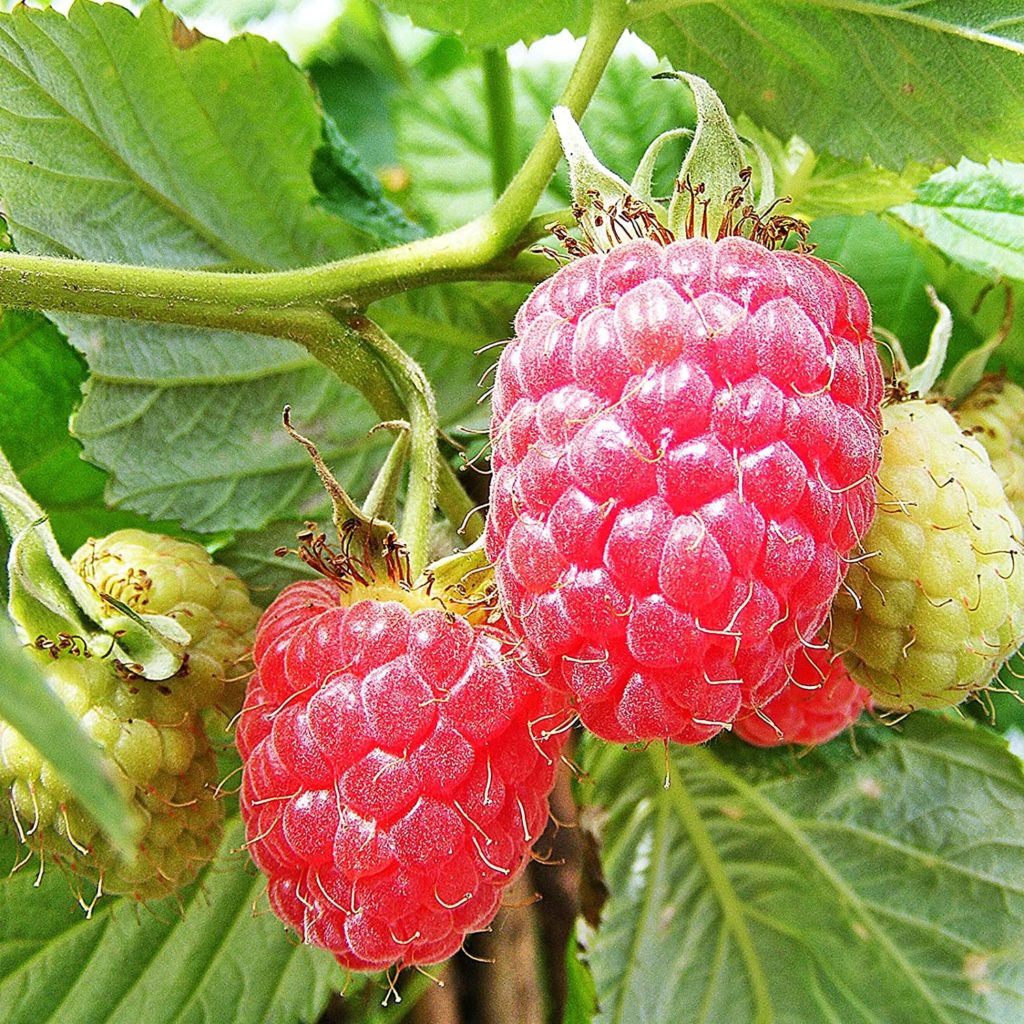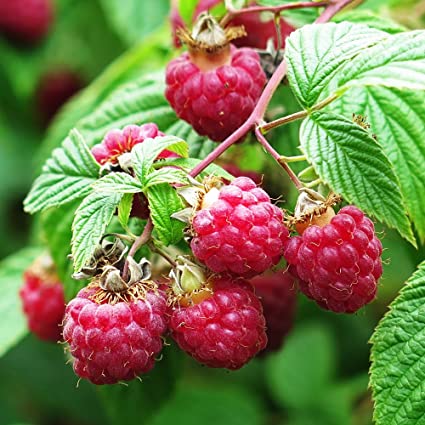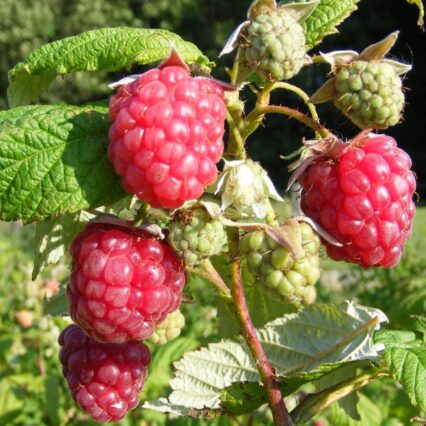Sweet and fresh tasting, raspberries are a favourite soft fruit that is enjoyed by most people. They are delicious in desserts, but unrivalled when eaten straight off the plant. Here’s how you can enjoy growing raspberries at home.

Raspberries are fairly easy to grow, and need just a little care for you to be rewarded with lots of tasty fruits.
There are some raspberry plants that fruit in the summer, and some that fruit in the autumn. If you have enough space, why not plant both types and get a long supply of scrummy raspberries?
Different Types of Raspberry Cane
The important thing to know when buying raspberry canes is that the come in two forms, Primocanes and Floricanes.
Primocanes are raspberry plants that produce flowers and fruits on the stems that are grown in that year, and this is usual for autumn fruiting raspberry canes. Some autumn fruiting varieties are Autumn Bliss, Polka and All Gold.
Floricanes are usually summer fruiting, and they produce flowers and fruits on stems that have had a year of growth. Summer fruiting raspberries tend to grow tall, and will need supporting. Summer fruiting varieties are Glen Ample, Glen Magna, Ruby Beauty, Tulameen.
Planting Raspberry Canes
To get the most fruit from your raspberry cane, plant in full sun. They will grow in shadier places, but it could affect the amount and quality of the fruit you get. Raspberry canes need well drained soil.
Each raspberry cane should be spaced around 35-40cm apart.
A handful of organic fertiliser will help the plant to get a good start once it begins to grow.
Caring for Raspberry Canes
In spring time, add some organic fertiliser to the soil around the plants, or apply a mulch of well-rotted manure or good quality compost. This will help to feed the plant, ensuring a good crop of fruit, and also help the soil to retain water.
Raspberries need plenty of water, especially when the fruit is growing.
Dig up any new plants that grow up from the soil some distance from your row. Raspberry plants grow suckers from their roots that produce new plants wherever the roots spread.
Pruning Raspberry Canes
Summer fruiting raspberries are pruned in a different way to autumn fruiting raspberries.
To prune summer raspberries, all of the canes that bore fruit during the year should be cut to soil level. The younger stems are much greener and less woody in appearance. These will be next to produce the fruit, so choose about 8 of the strongest looking stems, tie to supports, and remove the rest. This should be done in autumn.
Prune autumn fruiting raspberries in late winter. All you need to do is to cut the stems to around six inches above soil level. They will begin to grow again in spring.
Harvesting and Storing Raspberries
When ripe, raspberries can be pulled off the plant easily. It’s worth putting a fine mesh, net frame over your plants to stop the birds from eating all of crop.
Like all soft fruit, raspberries keep well when frozen although the texture of the fruit does tend to soften.
Grow more. See the A-Z growing guide for lots more fruit and veg!




